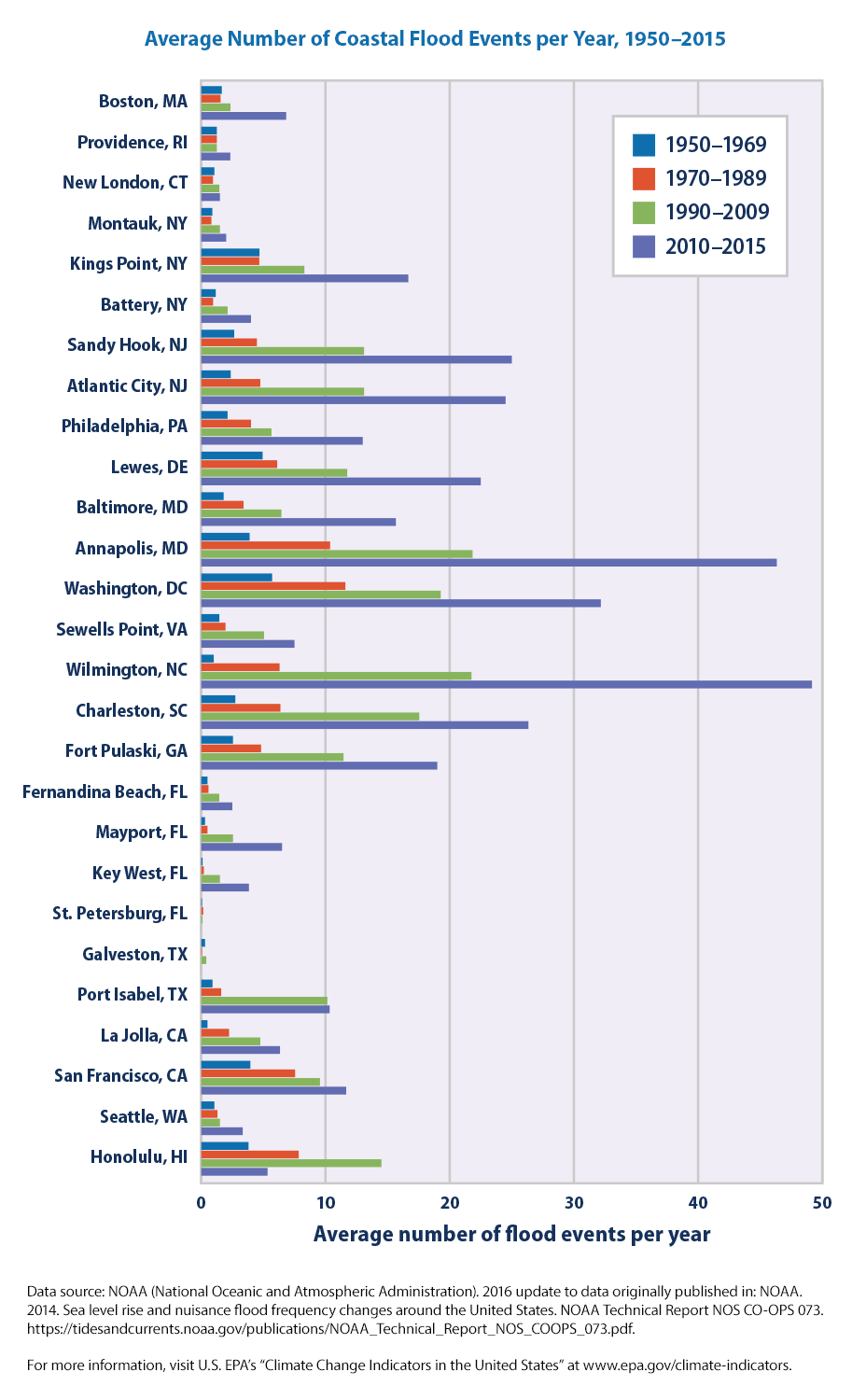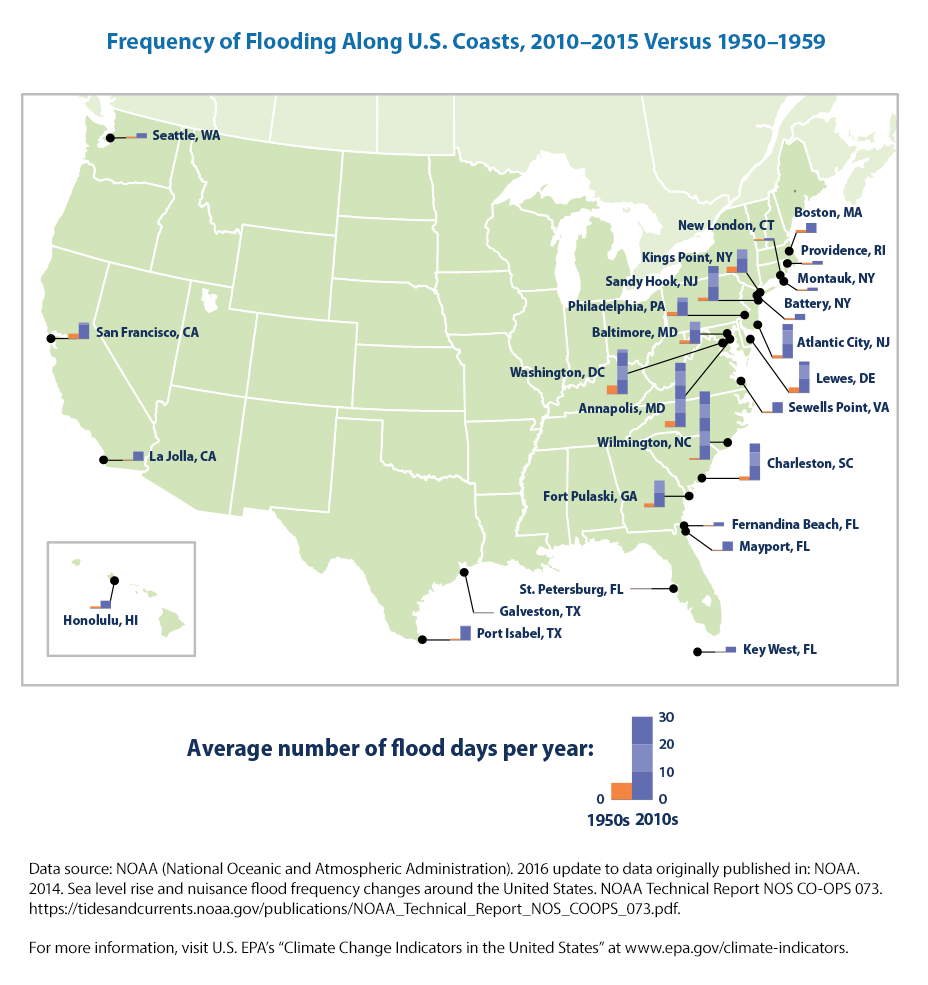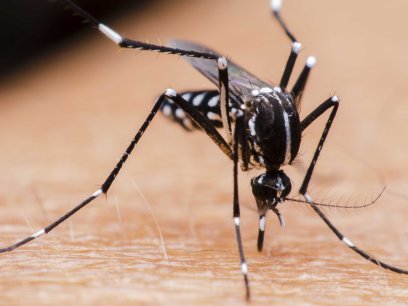
Did you know?
- More than 8.6 million Americans live in areas susceptible to coastal flooding.
- More than $1 trillion of property and structures is within a few feet of current sea level.
- By 2050, a majority of US coastal areas are likely to be threatened by 30 or more days of flooding each year.
Changes in our climate are increasing the risk and frequency of flooding for coastal communities in the United States. Rising sea levels, changes in precipitation, and increased rates of storm surges and erosion are increasing the vulnerability to flooding for coastal ecosystems, communities, and water and energy infrastructures. For example, areas of New York City could be flooded by several feet of water during strong storms with projected rates in sea level rise.
Coastal flooding usually occurs during seasonal high tides and storms that push water toward the shore. However, as sea levels are rising, floods in coastal communities are increasingly occurring on days with less extreme tides or little wind, even on sunny days. Impacts of coastal flooding may include frequent road closures, reduced stormwater drainage capacity, deterioration of infrastructure, and intrusion of saltwater to drinking water. These impacts can also affect human health—for example, deterioration of water infrastructure and saltwater intrusion may put people at risk of being exposed to pathogens and harmful chemicals.
Learn More
- The chart below shows the average number of days per year in which coastal waters rose above the local threshold for minor flooding at 27 sites along US coasts.

- The map below shows the number of days per year in which coastal waters rose above the local threshold for minor flooding at 27 sites along US coasts.

What you can do
- September is National Preparedness Month. Make a plan to prepare for disasters, such as flooding, and learn how you can help your community prepare and respond to natural disasters.
Sources
- EPA. 2016. "Climate Impacts on Coastal Areas." Accessed September 4, 2018. http://web.archive.org/web/20160802162502/https://www3.epa.gov/climatec…;
- EPA. 2016. "Climate Change Indicators: Coastal Flooding." Accessed September 4, 2018. https://www.epa.gov/climate-indicators/climate-change-indicators-coasta…;
- NOAA. 2014. "NOAA establishes 'tipping points' for sea level rise related flooding." Accessed September 4, 2018. http://www.noaanews.noaa.gov/stories2014/20141218_sealevelrise.html
- NOAA. 2016. "U.S. Climate Resilience Toolkit: Coasts." Accessed September 4, 2018. http://www.noaa.gov/media-release/noaa-establishes-tipping-points-for-s…
- USGCRP. 2014. "National Climate Assessment: Coasts." Accessed September 4, 2018. http://nca2014.globalchange.gov/report/regions/coasts#mid-atlantic-eros…;


